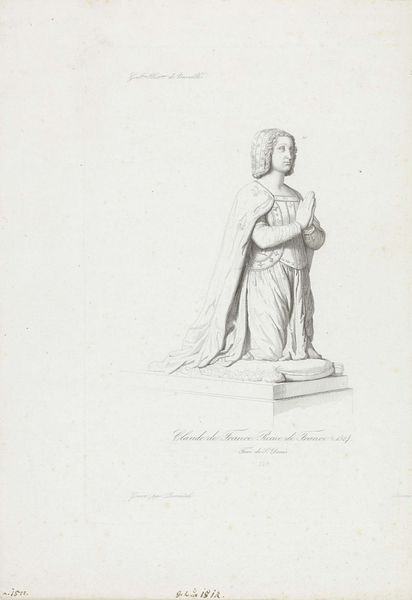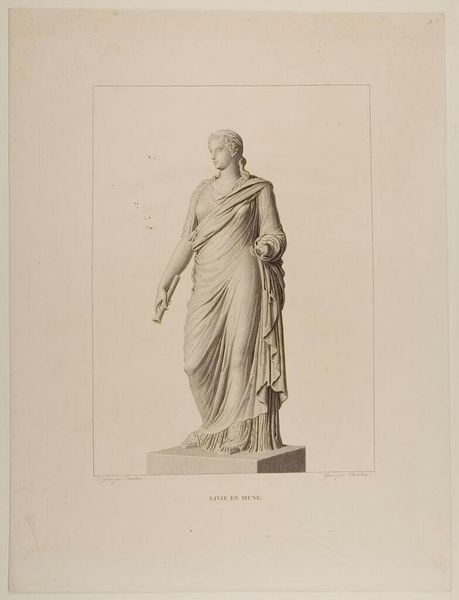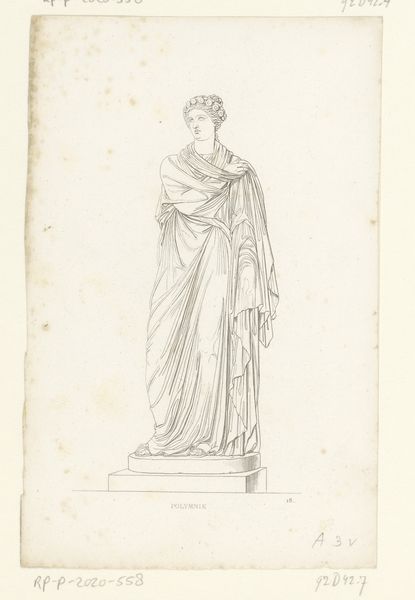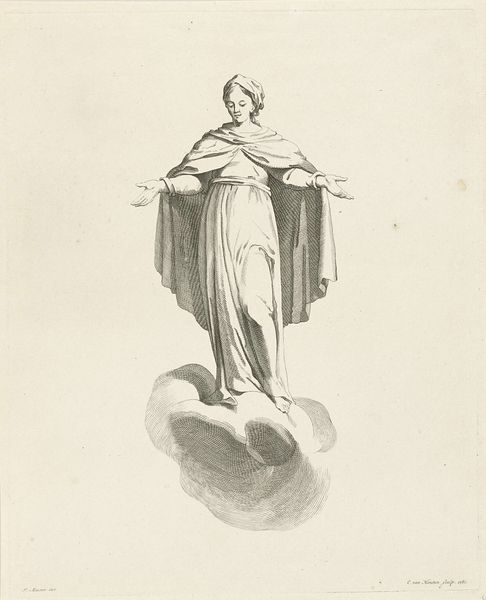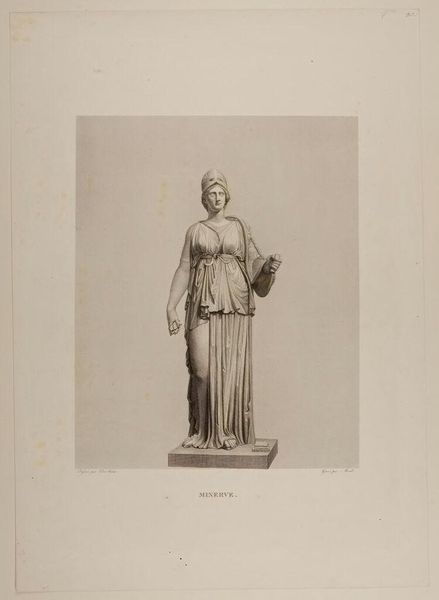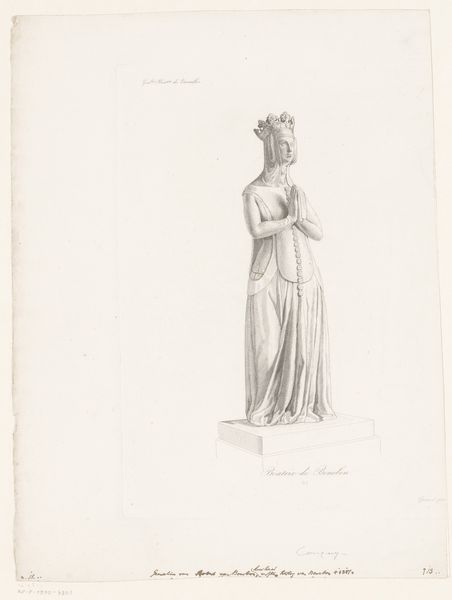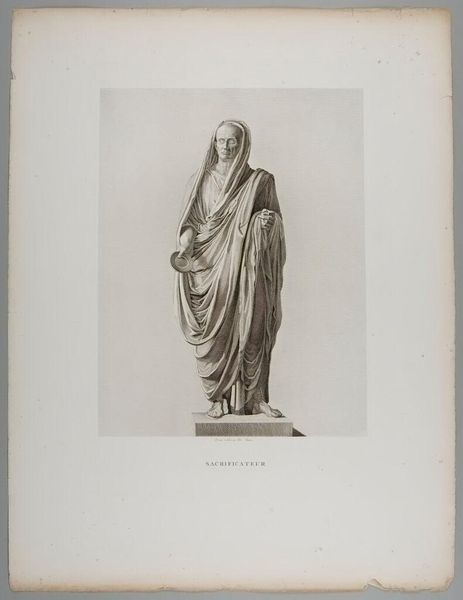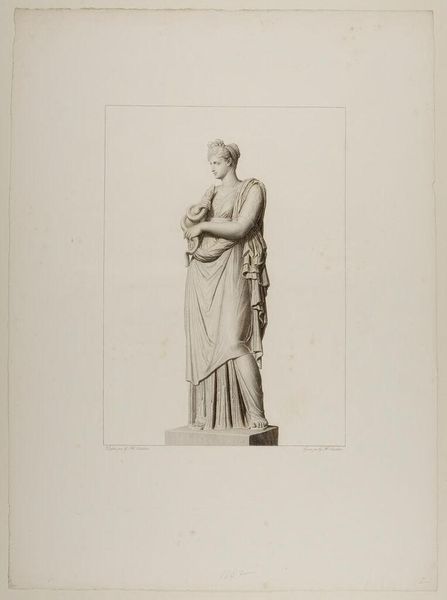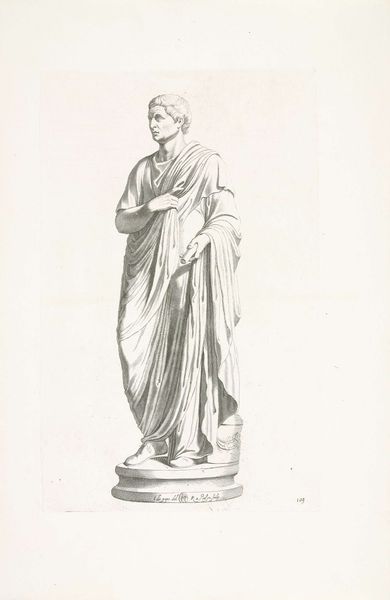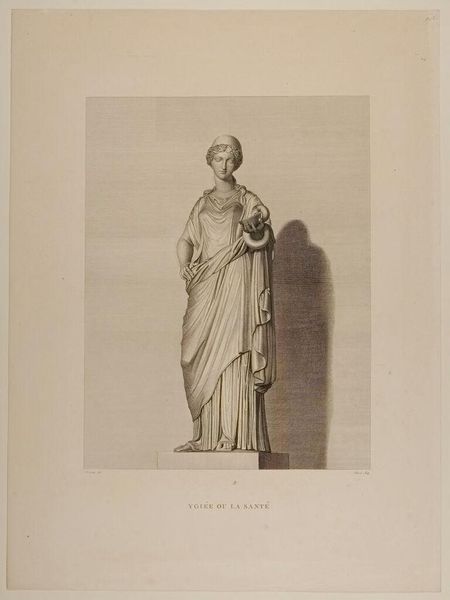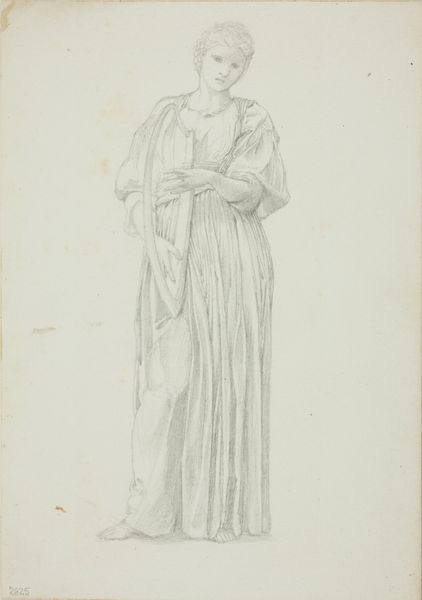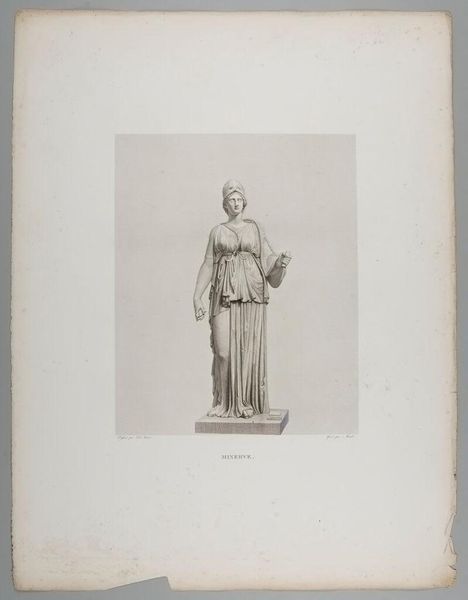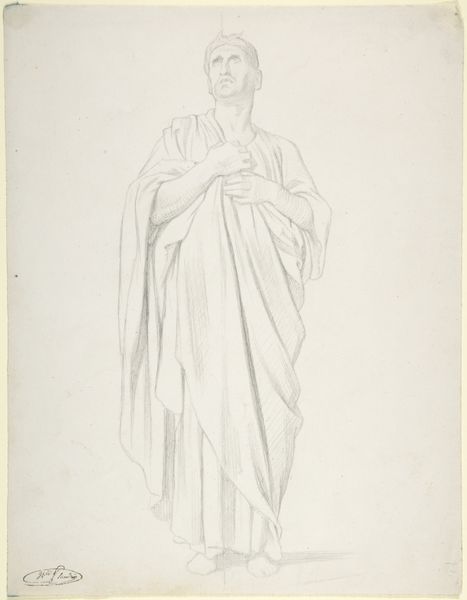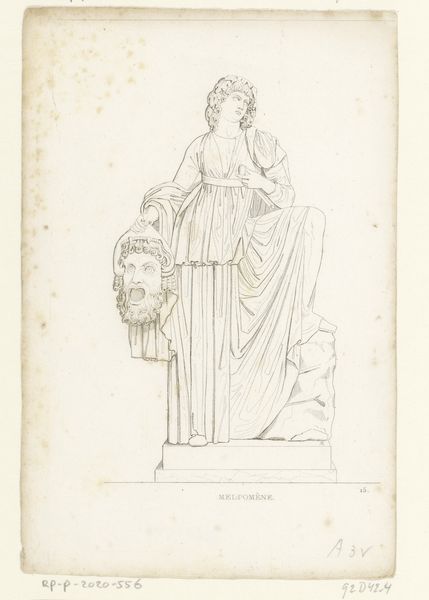
drawing, pencil
#
portrait
#
pencil drawn
#
drawing
#
pencil sketch
#
pencil
#
realism
Dimensions: height 368 mm, width 262 mm
Copyright: Rijks Museum: Open Domain
Curator: Here we have a pencil drawing dating from between 1818 and 1848, depicting "Sculptuur van Ultrogothe, koningin der Franken," or Sculpture of Ultrogothe, Queen of the Franks, by Jacopo Bernardi. Editor: The drawing has a fragile quality. It looks so delicate. Like holding your breath, lest you smudge it. I like the odd juxtaposition of regal poise and that gnarly little beast at her feet! Is it meant to be supportive or subversive, I wonder? Curator: The image itself captures a statue. Ultrogothe was the wife of Childebert I, a Frankish king during the Merovingian dynasty. It is useful to understand these depictions of royalty because they reflect cultural ideas and historical power structures. Editor: Royalty and power structures aside, her gaze has me hooked. She looks ethereal, distant, lost maybe, in some quiet contemplation, the severe clothes and restrained pose notwithstanding. And yet, there's a sweetness to her face... an approachable sadness? Curator: Yes, that humanizing element is important. Royal portraits, even drawings of sculptures, are always managing a careful balance between conveying authority and embodying relatable human traits to legitimize their position. Editor: Is it working, though? Knowing it's a copy of a sculpture does create a degree of separation, of course, but look at how she subtly presses on that tiny, squashed face! It is almost comical—a hint of the absurd in power. It’s all about perception, isn't it? Maybe Bernardi had a sense of humor. Curator: Maybe. He also was possibly trying to make his mark within Neoclassical portraiture or just making a copy for the archives; we may never be completely sure of his intentions. These kinds of representations solidify power and give a concrete face to the history books. Editor: I find myself far more interested in the space between reality and representation...that strange area that emerges when artists copy, reinterpret, and reflect. And the way those historical reverberations play with us here and now. Curator: And by investigating those "reverberations" and studying how imagery functions within culture, we start to get a sharper image of the world around us and understand how art perpetuates culture or challenges it. Editor: Absolutely. Art is not a fixed point but a starting place, right? And what a start— I’m taking this stoic queen, a tiny impish devil-creature and leaving! Thanks for all of the extra food for thought.
Comments
No comments
Be the first to comment and join the conversation on the ultimate creative platform.
